Honey Soy Salmon
May contain affiliate links. See our disclosure policy.
Honey Soy Salmon is a winning recipe that’s special enough for date night, but also fast enough for a quick weeknight dinner.
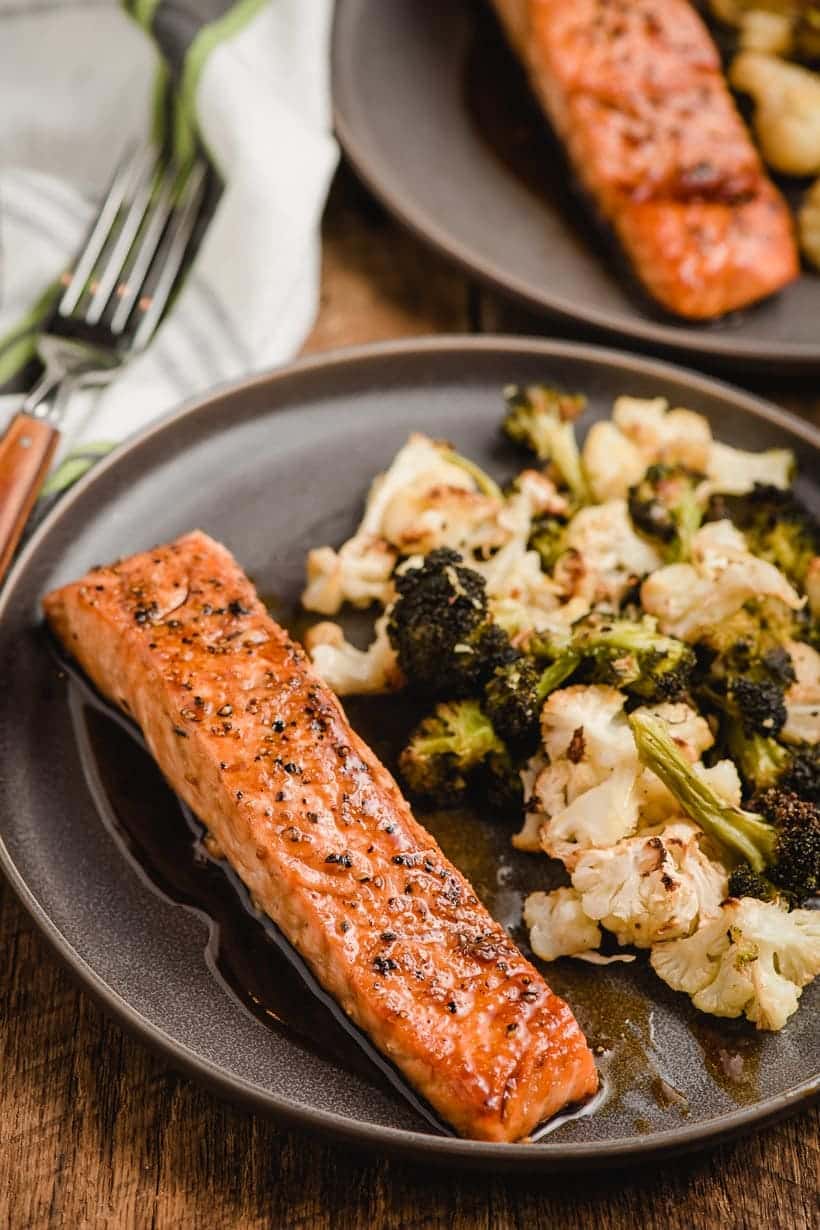
Table of Contents
Normally, a fish recipe would NOT be on my list of recommendations to parents with picky eaters, but believe it or not, THIS recipe was what my 5-yr-old requested… For his birthday meal!
Your mileage may vary on fish dinners in general (especially if you’ve had any bad experiences before), but I can tell you with certainty this Honey Soy Salmon is a crowd pleaser.
Why Honey Soy Salmon is a Great Recipe
- This soy honey glazed salmon is perfect because it is a QUICK dinner. I’m talking 20 minutes.
- All you need is a medium-large non-stick pan, and a veggie or side dish to serve it with.
- This is one of those sneaky recipes that makes you look like an amazing cook (which you totally are!)
- It’s got the perfect combination of savory, sweet, salty, and tangy flavors, plus when you serve a perfectly seared glazed salmon fillet, folks can’t help but be impressed. It’s not difficult, but the delicate complexity of the finished product suggests a chef that’s graduated way past your basic chicken dinner.
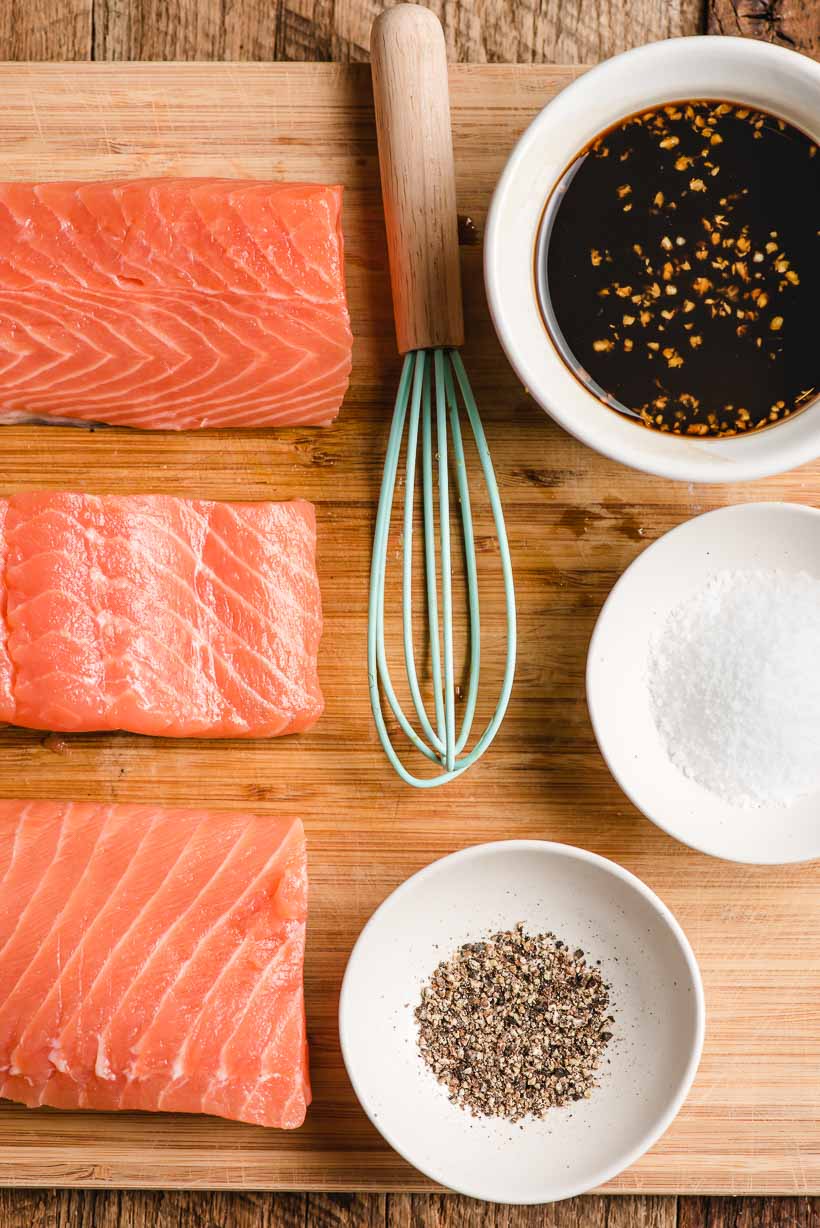
Salmon is a healthy choice
Salmon makes a great meal for it’s nutritional benefits. As a super-food, a 4 oz portion of salmon is packed with:
- nearly half of your daily recommended protein
- 2-3g of essential Omega-3 Fatty Acids
- It is high in B Vitamins,
- Low in saturated fats,
- and all for only around 200 calories
Salmon: It’s not fishy
I hope you enjoy fish as much as I do, but if you just can’t get over how “fishy” it smells or tastes, don’t worry!
As long as it’s fresh (or fresh from frozen), salmon tends to be one of the least fishy smelling AND tasting fish out there.
It has a more robust layered texture than other fall-apart whitefish and a subtle flavor that easily enhances some basic seasonings.
Plus with this Honey Soy Salmon recipe, the fish itself is a vehicle for more of that soy honey glaze sauce!
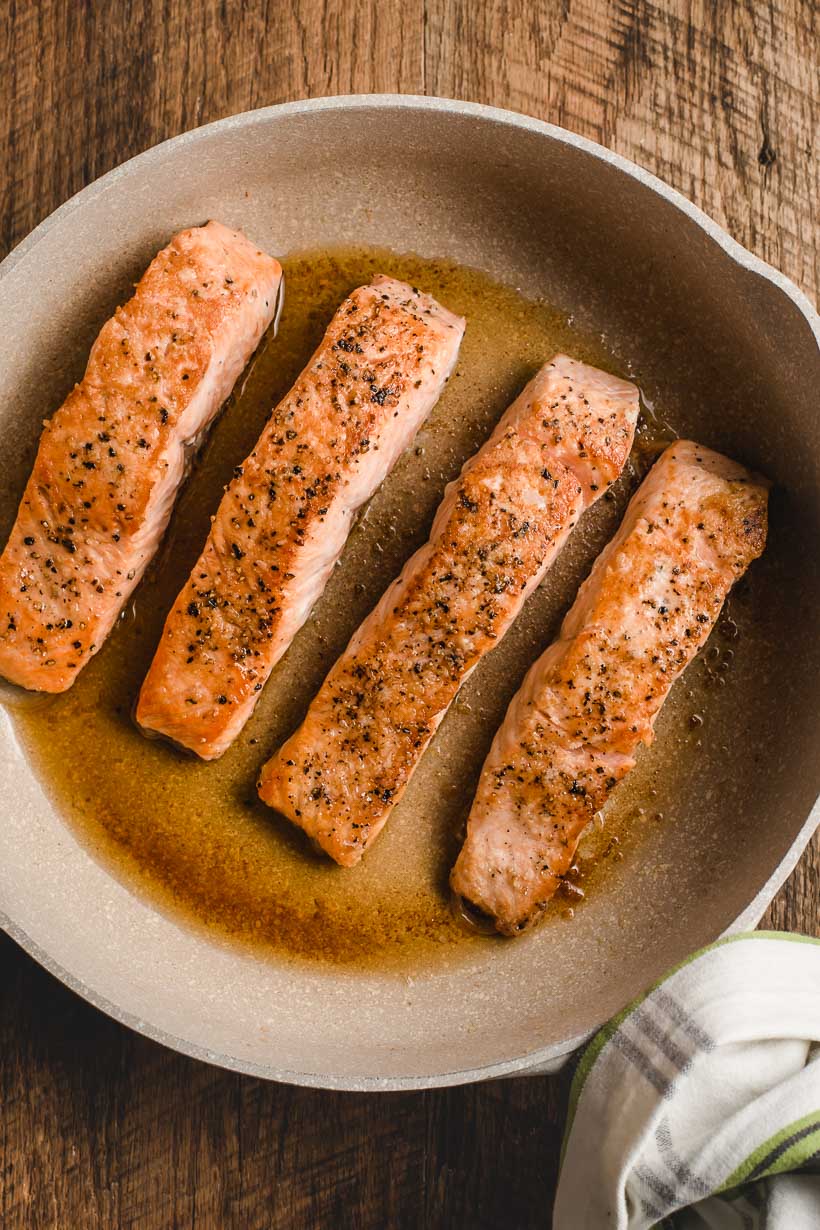
Atlantic vs Pacific: Farmed vs Wild Salmon
It is worth mentioning that (like most meats) there’s plenty of variety within the salmon that we consume. (6 different species marketed under different names)
The key is that Atlantic salmon = farm raised. Since Atlantic salmon is endangered, all Atlantic salmon for sale (at least in the US) is now farm raised and will be labeled as such.
The process of farm raising salmon has exploded in the last 20 years (due to technological advances), and aside from the economic benefits it provides to farmers, the boom in salmon farming (and the resulting supply) is responsible for the affordability and availability of salmon across the US market.
We Americans love our salmon (second only to shrimp in seafood) and we gobble up 284,000 metric tons of salmon (over 2.5lbs per person) annually.
Unlike their Pacific brethren, Atlantic salmon are not the open water, migratory fish that you see hopping waterfalls and avoiding grizzly bears on National Geographic. Farmed salmon have to be brought up to market weight (and color) by artificially supplementing their diets.
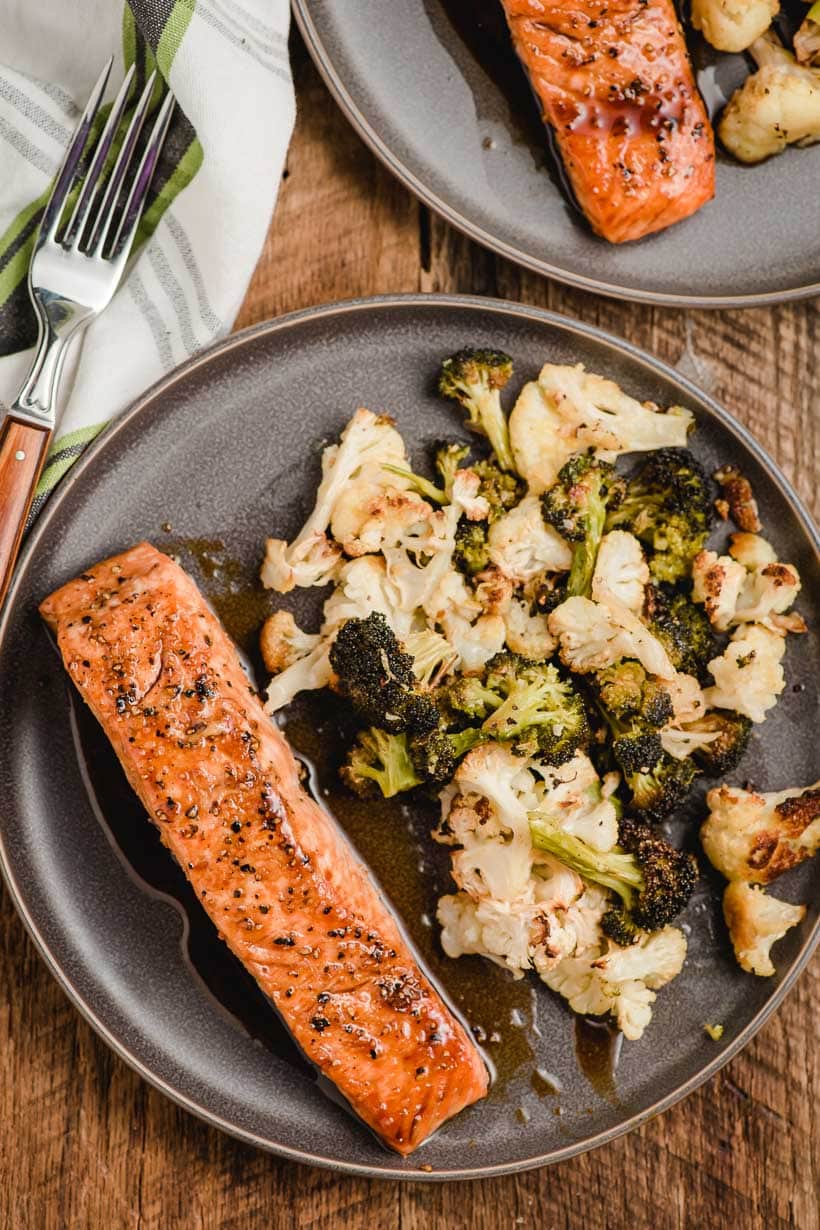
As such, Atlantic salmon have a slightly higher fat content, and are slightly less protein and nutrient rich. They also must be treated with antibiotics to avoid contamination.
Like with any meat product, most farmers work extremely hard to ensure the health and quality of their livestock while limiting any environmental impact.
As a consumer, you have to choose what’s best for you. Though, if you want to be 100% certain that you’re getting the freshest, most naturally raised, and environmentally conscious fish out there, make sure the label specifies Pacific salmon that is “wild-caught.” Just be ready to pay more for it.
Should you rinse salmon?
No. Cooking your salmon properly will eliminate any bacterial concerns.
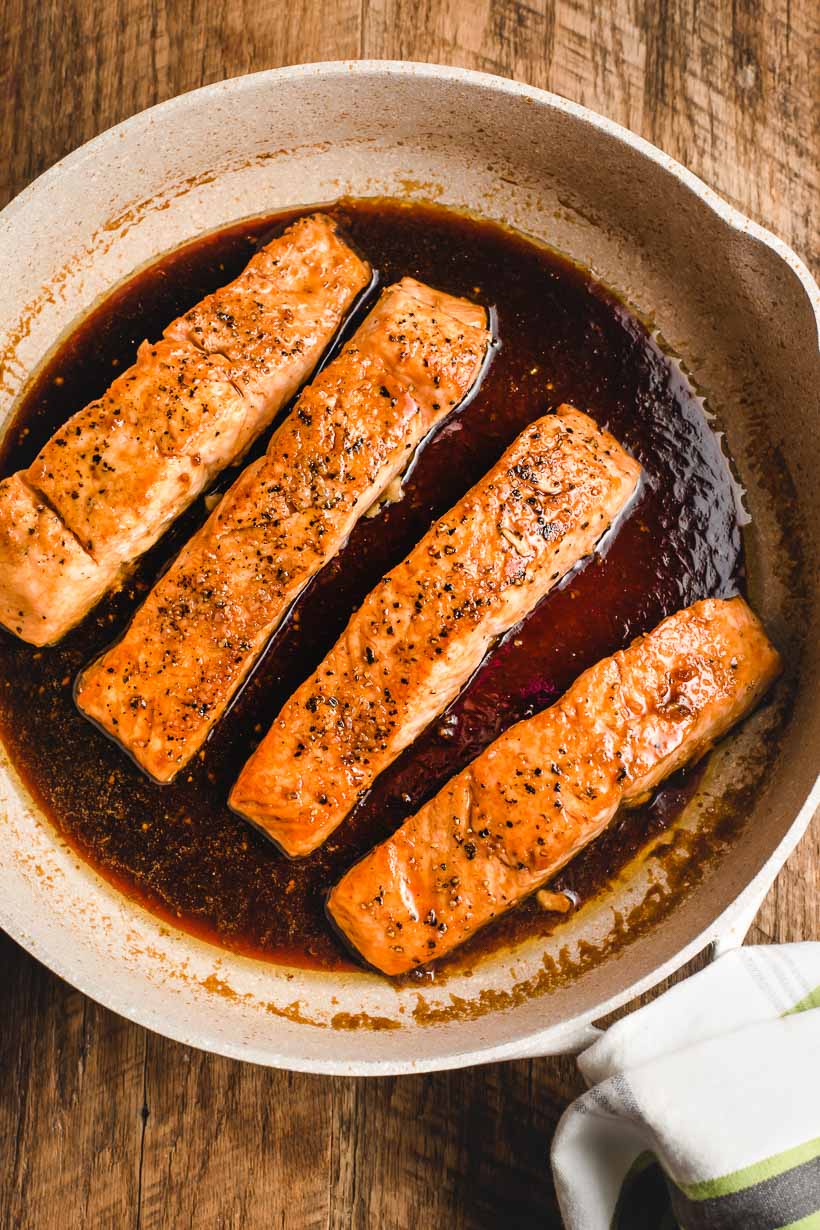
How to Pan Sear Salmon
- Take your salmon fillets out of the packaging and season with salt and pepper.
- Heat a neutral oil in a large skillet over medium high heat. Add the salmon, skin side down and cook until it’s pale pink 2/3 of the way up, about 5-6 minutes.
- Flip the salmon over and cook for another 3-4 minutes or until fish flakes easily. Remove to a plate.
Depending on the size of your pan, you may need to cook the salmon in two batches. The fillets shouldn’t be touching at all in the pan.
How To Make a Honey Soy Glaze for Salmon
While the salmon sears, mix up the simple glaze made up of:
- low sodium soy sauce (You can substitute with regular soy sauce, but take it easy when you salt the fish to avoid the dish becoming too salty).
- honey
- rice vinegar
- minced garlic
- grated ginger
Add the glaze to the still-hot skillet. It’ll bubble fiercely! Don’t worry. Use your spatula to scrape any browned bits off the bottom, then continue to cook, stirring often, until the glaze is thickened.
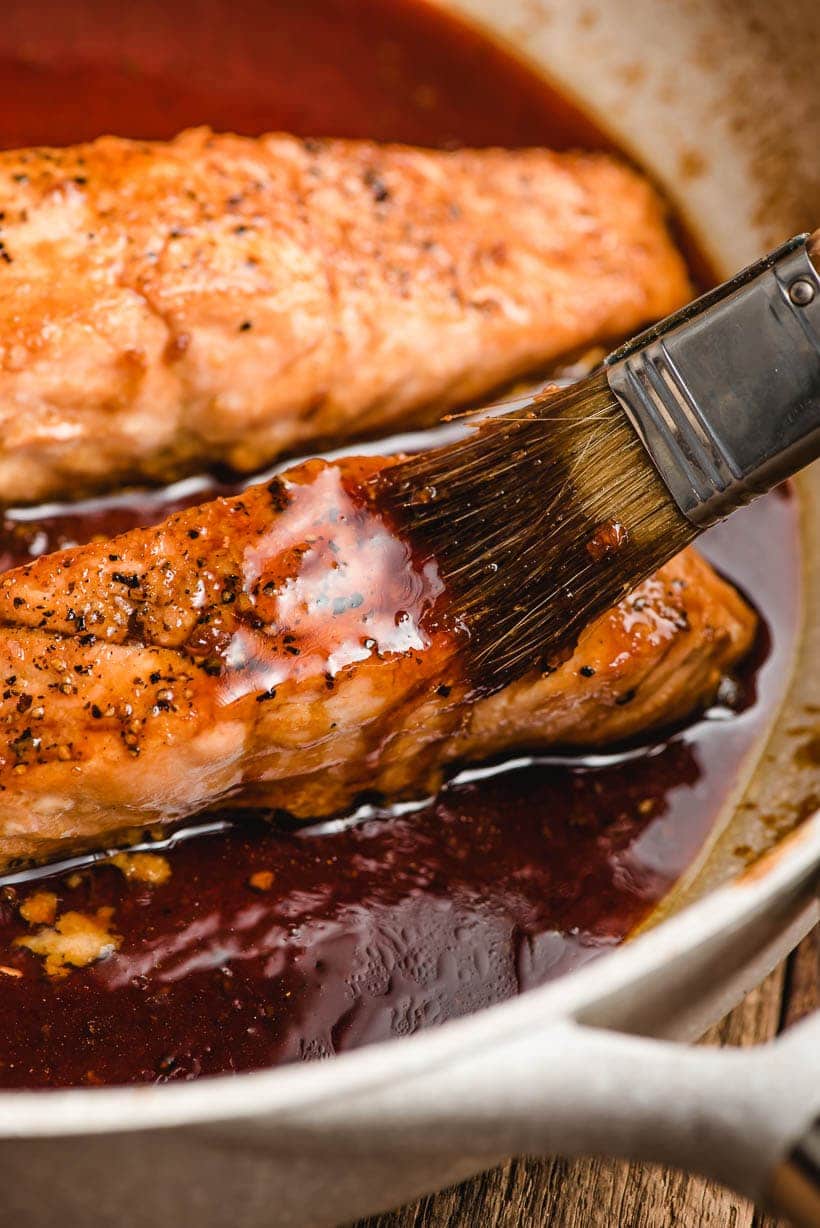
You’ll know the glaze is ready when you drag a spatula through it, and it takes a few seconds for it to run together again.
Add the salmon back to the pan and turn over to glaze. You can use a brush to brush on additional glaze when serving.
*Side note: if this glaze sauce really does it for you, try our Asian Chicken Marinade for some similar flavors but on glazed grilled chicken.
How to know when salmon is cooked?
Use a meat thermometer to check the internal temperature of your salmon. Stop cooking it when it is at an internal temperature of 135° F. The salmon should easily flake with a fork.
The border meat nearest the skin will have a darker color, higher fat content, and will be softer. (Don’t worry, it isn’t raw.)
and speaking of skin…
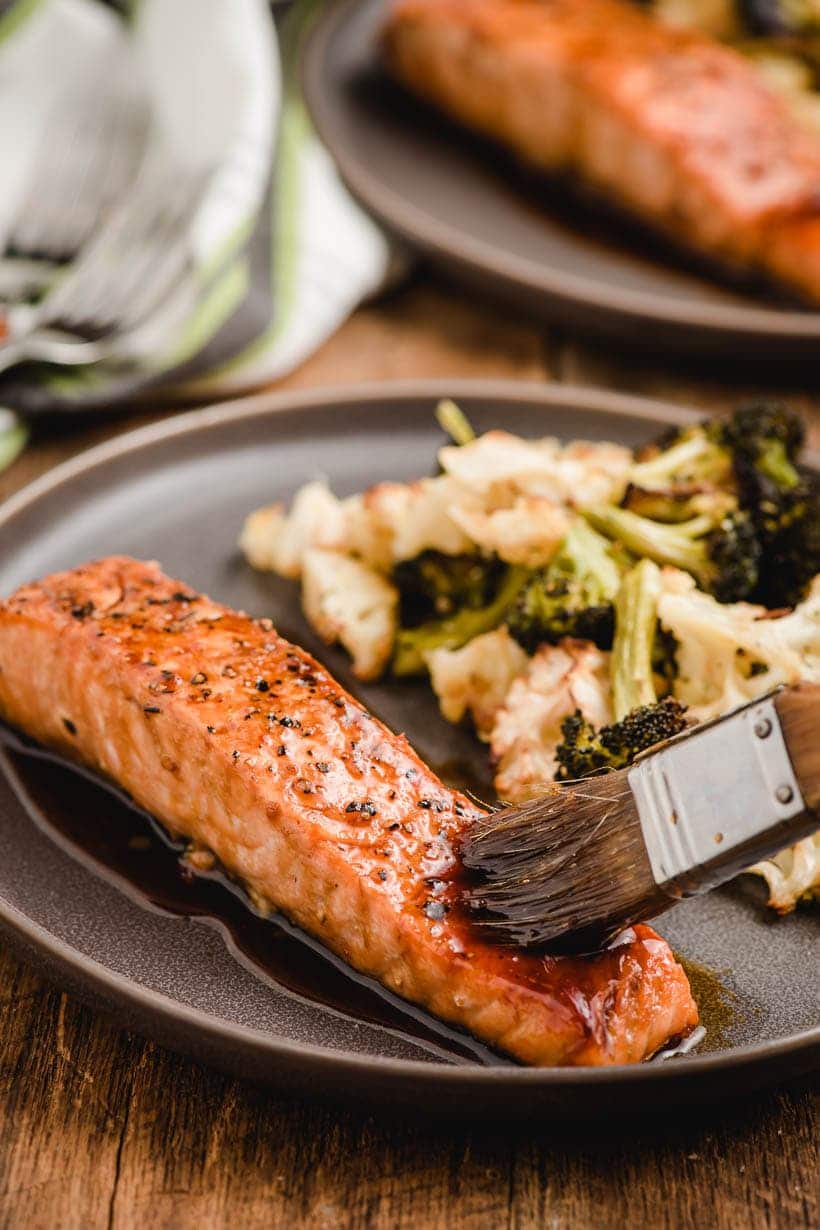
Do you eat the skin on salmon?
Personal preference. There’s no wrong answer here. The skin has the same nutritious benefits as the rest of the salmon, and can crisp up nicely. If you’re scared about toxins in the skin, I’m not sure why you’d be concerned with just the skin, and not the whole fish honestly, but whatever.
What Goes With Honey Soy Salmon?
More like, what doesn’t? This Honey Soy Salmon pairs nicely with some roasted broccoli and cauliflower (what you see pictured on the plate here).
Or if they’re in season, try some sauteed Garlic Green Beans (to stick with the single pan theme).
With it’s Asian flavor profile, this glazed salmon is also great with fried rice and egg rolls.
Or keep it simple with an easy garden salad!
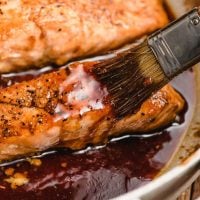
Honey Soy Salmon
Ingredients
- 4 skin on salmon fillets (4-6 ounce each )
- Kosher salt and fresh cracked pepper
- 1 Tablespoon vegetable or sesame oil
For the salmon glaze:
- 1/4 cup low sodium soy sauce
- 1 1/2 Tablespoons honey
- 2 Tablespoons rice vinegar
- 1 large clove garlic (minced)
- 1/2 inch nub of ginger (peeled and grated)
Instructions
- In a small bowl, whisk together the glaze ingredients. Set aside.
- Season the salmon evenly on both sides with salt and pepper.
- Heat the oil in a large skillet over medium high heat. Add the salmon fillets to the skillet, skin side up. Cook for 5-6 minutes, or until the salmon is white about 2/3 of the way up the fillet.
- Flip over and cook an additional 3-4 minutes or until the fish easily flakes with a fork or a meat thermometer reads 135 degrees. Remove the fish to a plate.
- Turn the heat down to medium, and add the sauce ingredients to the pan (it’ll bubble a lot!), scraping up any browned bits on the bottom. Cook, stirring often, until the sauce is thickened, about 3 minutes. The sauce is ready when you drag a spatula through it and it takes a few seconds for it to run back together.
- Add the salmon fillets back to the pan, turning them to coat. Serve immediately, brushing with more pan sauce as desired.
Notes
- If your skillet isn’t big enough for all the fish to fit with breathing room around each of them, sear them in two separate batches.
Nutrition
Need More Salmon?
Be sure to check out my delicious Grilled Salmon with Mango Salsa!

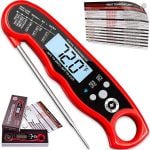
Im a beginner level cook, and this came out perfect! I used a dutch oven and it worked so well to sear salmon as well a super fresh salmon. So easy and presentation was awesome . thank you so much